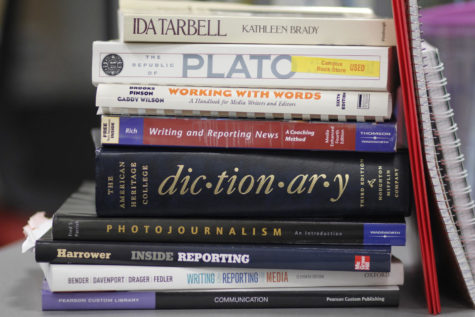Rasmussen: Remembering that ‘tomorrow is worth living for’
September 13, 2020
Editor’s note: this column has been updated on 9/13/20
Sept. 6-12 is National Suicide Prevention Week, with Sept. 10 being Suicide Prevention Day. “Nearly 800,000 people die by suicide in the world each year, which is roughly one death every 40 seconds. Suicide is the 2nd leading cause of death in the world for those aged 15-24 years.”
When talking about suicide prevention, it’s important to look at the communities that are affected by it the most. “Mental health affects everyone, but some groups are disproportionately impacted by suicide, with contributing factors of discrimination across race, gender identity and sexual identity.” Other highly impacted groups include veterans.
What can we do about these staggering statistics? First and foremost, changing the stigma surrounding suicide and mental health is an important step in the right direction. Depression and suicidal ideation have been around since the beginning of humankind, but in recent years, it has become more normalized and generally easier to openly talk about it.
Before minimizing someone else’s struggle because it doesn’t translate to a hardship in your mind, remember that each person has their own individual darkness they grapple with. Even if someone has an outwardly “great” life, a chemical imbalance in the brain can hinder some people from feeling worthy, genuinely happy or okay. We should continue to normalize openness about those struggles because, sometimes, an honest conversation can save a life.
Another doable method is by reaching out to friends and/or family members who are displaying signs of isolation, depression, anger, substance abuse, self-infliction and so on. It’s easy to let someone know that you’re there for them if and when they need you, but not everyone feels comfortable reaching out when they’re struggling. Willingly taking the lead and lending your hand to those who are displaying warning signs might make that person feel less alone.
It’s more effective to straightforwardly ask, “Are you thinking of killing yourself?” instead of dancing around the question, waiting for them to bring it up. If you have the emotional capacity to do so, be there for your loved ones. If you don’t have the emotional capacity, that’s okay, too. Self-care is another vital aspect of ensuring mental health safety.
While this year has been insanely difficult to deal with, it’s important to remember, “Your pain is real. We know the weight is heavy. We hear you when you say you feel alone. We want you to fight to see tomorrow. Not for us, but for yourself. Because though you don’t feel okay right now, we believe there’s hope. We also believe in help. And we know your tomorrow is worth living.”
Please remember that there isn’t one single form of prevention that works in every situation, and there are multiple forms of outreach and professional help to which folks who are struggling can turn, especially if they’re in imminent danger. Suicide prevention also includes community, affordable housing, healthcare and so on. The conversation is much more vast than what’s mentioned here but opening the conversation is the beginning.
Resources:
Crisis Text Line: Text TALK to 741741
The Trevor Project (for the LGBTQ+ community): 1-866-488-7386
American Foundation for Suicide Prevention
National Suicide Prevention Lifeline: 800-273-8255















